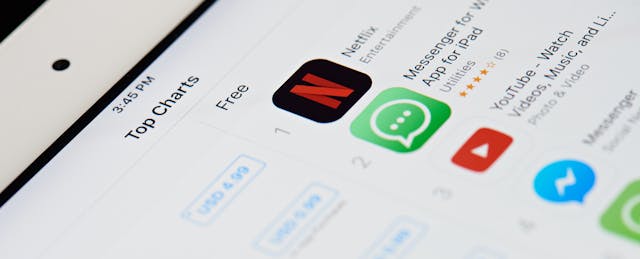Gmail. Instagram. YouTube. Chances are you’ve opened up one of those apps today on your phone (and perhaps spent more time on them than you might like to admit).
But earlier this week, one educational app reigned over all in the endless galaxy of apps. According to both Apple and App Annie, a website that tracks the popularity of mobile apps by number of new downloads, Remind, a school communications platform, took the #1 spot on the chart of free iOS apps.
It’s a rare feat for an educational tool to best the social and entertainment apps that absorb so much of our attention. “Every time you see a non-social, non-entertainment or non-gaming app top the chart, I would say that’s a pretty big deal,” says Amir Ghodrati, director of market insights at App Annie.
So how does an app that primarily functions as a messenger for students, parents and educators take the crown?
Seasonality may well have something to do with it, offers Brian Grey, CEO of Remind. For a few days last August, the company topped the app charts as well. “It’s become a trend that’s happening at this time of the year as teachers are preparing for the new school year,” he tells EdSurge. Grey largely credits teachers with onboarding students and parents onto Remind, and quips that it’s “become a back-to-school routine.”
Remind’s app allows educators, parents and students to send and receive text and voice messages, as well as share attachments and links to digital educational resources. The company was founded in 2011 with a straightforward value proposition: to provide teachers with a safe and secure way to send homework or study reminders to students and their parents on mobile devices without using personal phone numbers.
Those features may seem simple by today’s standards. But it’s amassed a growing footprint, claiming users in more than 70 percent of U.S. public schools. Grey adds that Remind today has 27 million monthly active users (which breaks down to approximately 2 million teachers, 13 million students and 12 million parents). Across them, Remind says 17 billion messages have been sent since its launch.
Along with simplicity, Remind’s timing may have also helped the product find a receptive market. The company’s launch in 2011 coincided with the start of a period that saw smartphone adoption among U.S. adults steadily grow from 35 percent in 2011 to 77 percent in 2018, according to the Pew Research Center.
Besides app store rankings and monthly active users, though, there’s another number that Remind and its investors watch closely: revenue. It was not until summer 2016—five years after it launched—that Remind tried rolling out paid features. (The first attempt, a service that processed school-related payments, fizzled.) Later that year, Brian Grey, an early Yahoo employee and former CEO of Bleacher Report, was brought in as CEO to give the business a boost.
Today, Remind sells an enterprise version of its platform to schools and districts. Among the additional features: a student rostering functionality that makes it easier for IT administrators to create and manage user accounts, and data visualization tools that allow school leaders to track, monitor and analyze how frequently parents, students and teachers communicate.
More than 700 K-12 schools and districts have purchased these subscriptions, which cost roughly $4 per student per year. The company declined to disclose how many students these paying organizations serve, or whether it has reached profitability. To date, Remind has raised $59.5 million in venture capital.
At its core, Remind remains very much a school communications tool, says Grey. But his grander vision is to evolve the app into what he calls an “educational platform” that allow users to share content from other providers. For instance, when Remind users compose a message, they can currently connect to their accounts on Google Classroom, Google Drive, Microsoft OneDrive, Quizlet and other tools to directly share documents, Powerpoint slides, flashcard sets and other kinds of files.
Remind doesn’t charge or pay these companies for these integrations. “From a business standpoint,” says Grey, “they make Remind more valuable to our school and district partners.”
In an interview last year, Grey told EdSurge he envisions “a world where Remind becomes the point and the organizing mechanism for all of the kids’ homework and content.”
The company may well see a dip in downloads once the school year kicks into gear and so lose its top spot on the app store. But it’s not the only educational app that’s high on the charts. At the time of writing, other educational tools in App Annie’s Top 50 list for free iOS apps include ClassDojo (#18), Google Classroom (#26) and PhotoMath (#45). On the Top 50 list for free Google Play apps, there are just two: Remind (#9) and ClassDojo (#26).


